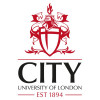© Pint of Science, 2024. All rights reserved.
Phenomena in the quantum world is far removed from anything we are used to in everyday life. We will be led through a strange piece of history by Dr Marcos Alvarez in which he details how quantum mechanics was very nearly discovered in 1835, a full 90 years before the theory was realised in earnest. Dr Alessandro De Martino will then discuss the properties of some fascinating new materials, which are composed only of a single layers of atoms and hold promise for new technologies such as smartphone touchscreens.
The Hamiltonian Analogy, or how we almost discovered Quantum Mechanics in 1835.
Dr Marcos Alvarez
(Lecturer in Mathematics)
Quantum Mechanics, formulated in 1925, is the cornerstone of our current understanding of the world. From the elementary particles to macroscopic objects, everything evolves in time and interacts with everything else precisely as the laws of Quantum Mechanics require. In this talk we will briefly describe the state of Physics in the early XIX century and take a look at the thoughts on Mechanics and Optics that were slowly coming ever closer together, to the point that only a relatively minor step would have been enough to combine both into a version of Quantum Mechanics almost a century before
A short walk in flatland
Dr Alessandro De Martino
(Senior Lecturer in Mathematics)
In the last few years scientists have been able to isolate, engineer, and study new materials which are strictly two-dimensional, that is, just one-atom thick. The first and most famous of them is graphene, a flat layer of carbon atoms arranged in a honeycomb structure, but many other have been discovered. They share many surprising and extraordinary properties, and promise to have a broad range of important applications. In this talk I will take you on a short tour of the fascinating physics of these new materials.
Map data © OpenStreetMap contributors.

